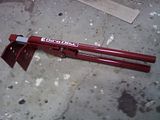"the nearest Toyota dealer "
The only reason to go to a dealership for repairs is when you have a warranty claim. Or too much money in your wallet. Find a good local shop.
What is a siphon exchange? Just changing the fluid in the reservoir? Better than nothing, but not much.
The only reason to go to a dealership for repairs is when you have a warranty claim. Or too much money in your wallet. Find a good local shop.
What is a siphon exchange? Just changing the fluid in the reservoir? Better than nothing, but not much.


